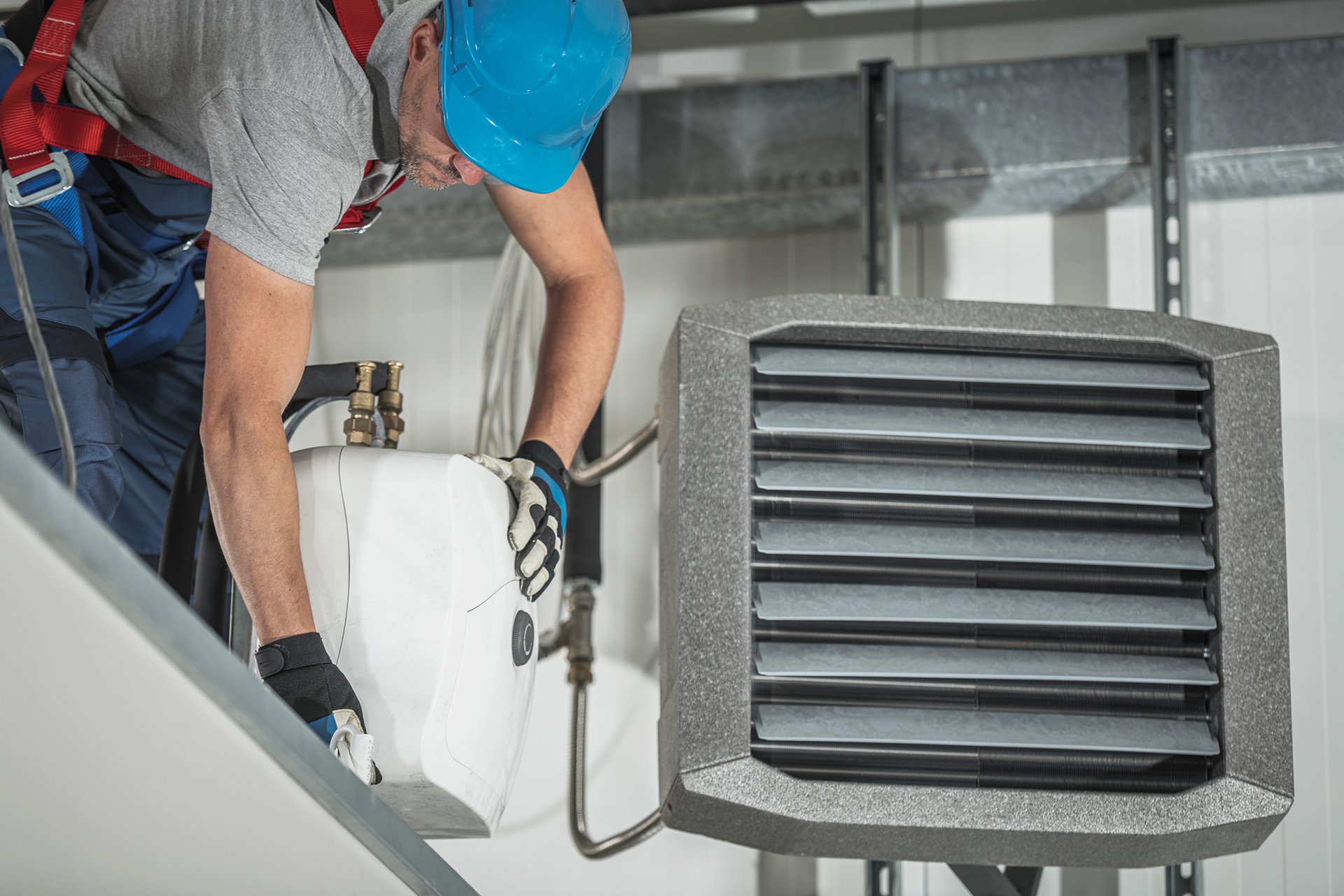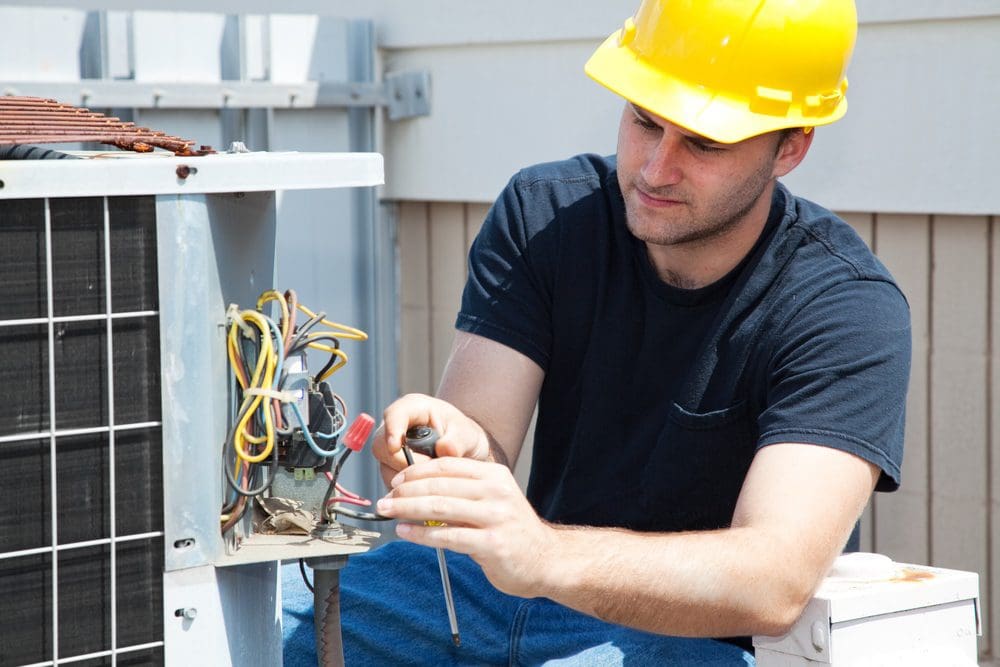Seasonal Reasons for heat pump installation ooltewah tn
Seasonal Reasons for heat pump installation ooltewah tn
Blog Article
Exactly How a Heatpump and Furnace Interact to Maximize Your Home's Home heating Effectiveness
Comprehending how a heatpump and heater interact is essential for property owners seeking effective heating options. Each system has its staminas, offering a balanced method to home comfort. The heatpump masters moderate temperatures, while the furnace supplies rapid heat throughout severe cold. This synergy not just reduces power expenses yet additionally boosts the lifespan of both devices. What aspects influence this partnership, and just how can house owners optimize their benefits?
Recognizing Heat Pumps: Exactly How They Function
Numerous individuals may be unknown with their internal functions, warmth pumps play an essential duty in modern heating systems. These gadgets operate by moving warmth from one location to another, using the concepts of thermodynamics. In cooler months, a heat pump removes warmth from the outside air, ground, or water, and transfers it indoors to warm the space. Alternatively, during warmer months, it can turn around the process, acting as an a/c unit by eliminating warmth from inside to the outside.Heat pumps consist of an evaporator, growth, condenser, and compressor valve. The cooling agent within the system takes in warmth as it evaporates at reduced temperatures and pressures. The compressor after that raises the stress and temperature of the refrigerant, allowing it to release heat as it condenses. This efficient process can greatly reduce power usage contrasted to typical heating methods, making heatpump a lasting selection for environment control in homes.
The Duty of Heating Systems in Home Heating
Heating systems play a crucial duty in home heating by giving a dependable source of warmth during the chillier months. They run by creating warmth with combustion or electrical resistance, dispersing it throughout the home using ducts or radiant systems. The effectiveness of a furnace is often determined by its Yearly Gas Application Effectiveness (AFUE) score, which shows exactly how successfully the device converts fuel right into heat.Furnaces can use numerous energy sources, consisting of all-natural gas, lp, oil, or electrical power, allowing property owners to choose one of the most appropriate choice for their demands. Unlike heatpump, which might struggle in severe cold, heaters keep constant efficiency, guaranteeing that interior temperatures remain comfortable no matter of outside conditions. Furthermore, modern heaters often come furnished with advanced innovation, such as wise thermostats and variable-speed blowers, boosting their efficiency and responsiveness. This flexibility makes furnaces a critical component in all-inclusive home heating strategies.

Benefits of Using Both Systems Together
Integrating the strengths of both furnaces and heatpump can lead to a much more reliable and efficient home heating option. Making use of both systems enables property owners to take advantage of the heatpump's energy performance throughout milder temperatures while relying upon the heater for more severe cold conditions. This dual approach can greatly reduce energy prices, as heatpump take in much less power than standard heating methods when temperatures are moderate.Additionally, making use of both systems together can boost convenience levels in the home. Heatpump can give consistent, even heating, while heaters can promptly raise ambient temperature levels when needed. The assimilation of both systems can extend the lifespan of tools by minimizing wear and tear on each device, as they share the workload. Inevitably, house owners can enjoy a balanced, cost-effective home heating solution that changes effortlessly to varying climate condition, guaranteeing a warm and inviting home throughout the cold weather.
Just How Heat Pumps and Furnaces Enhance Each Other
They create a complementary heating system that maximizes effectiveness and convenience when home owners incorporate heat pumps and heating systems. Warm pumps run by transferring warm from the outdoors air or ground, making them very reliable in modest environments. They excel during milder temperature levels, providing cost-efficient home heating. Alternatively, heaters create heat with combustion or electric resistance, delivering solid, prompt heat during extreme chilly conditions.The combination of these two systems allows for dynamic adjustments based upon temperature level variations. During warmer months or milder winter days, the heat pump can take the lead, conserving energy and lowering costs. As temperature levels decrease, the furnace can effortlessly involve, guaranteeing constant warmth throughout the home. This harmony not just optimizes energy usage however likewise enhances the life expectancy of both systems, as each unit runs within its excellent efficiency variety. Together, they develop a well balanced environment that adjusts to varying climate needs.
Optimizing Efficiency: Tips for Homeowners
Property owners can enhance their home heating efficiency with several sensible approaches. Developing a regular upkeep routine, integrating clever thermostat modern technology, and implementing efficient insulation and securing options are key steps. These actions not just improve comfort yet additionally minimize energy expenses.
Routine Maintenance Arrange
To assure maximum heating performance, establishing a regular upkeep schedule is essential for any kind of home. Property owners should prioritize routine examinations of both warm pumps and heaters to ascertain peak efficiency. This consists of transforming air filters every one to 3 months, as stopped up filters can significantly lower efficiency. Furthermore, organizing expert upkeep at the very least annually permits specialists to determine and resolve potential concerns before they intensify. Home owners should also cleanse the warmth pump's outdoor unit to avoid debris buildup that can impede airflow. By sticking to a routine upkeep routine, homeowners not only improve their furnace' performance yet also extend their lifespan, causing better convenience and reduced energy prices throughout the cooler months.
Smart Thermostat Assimilation
Incorporating a smart thermostat into a home furnace can substantially improve energy efficiency, particularly as it permits exact control over temperature level setups. These gadgets can find out the property owner's routine and preferences, immediately adjusting the temperature level to enhance comfort while decreasing power use. As an example, they can lower home heating throughout times when the home is vacant, reducing unneeded consumption. Numerous clever thermostats likewise give real-time power usage information, allowing property owners to make educated choices regarding their home heating practices. In addition, remote gain access to using mobile phone applications permits users to readjust settings from anywhere, guaranteeing the home is warm upon return. On the whole, wise thermostat assimilation not only improves convenience however substantially adds to energy cost savings and efficiency.
Insulation and Securing Solutions
Smart thermostats play an important duty in power performance, however their performance can be greatly improved by correct insulation and sealing remedies. Homeowners must focus on shielding attics, floors, and wall surfaces to reduce warm loss. High-quality insulation materials, such as spray foam or fiberglass, can considerably improve thermal resistance. Furthermore, sealing spaces around air ducts, doors, and home windows prevents cold air seepage and warm getaway. Weatherstripping and caulking work approaches for resolving these leaks - furnace replacement. Routine assessments for air leakages, together with the usage of blower door examinations, can assist determine trouble areas. By investing in insulation and securing, home owners can maximize the performance of their heater, inevitably leading to reduced power intake and reduced utility bills
Usual Myths About Heat Pumps and Furnaces
What misconceptions surround warm pumps and heating systems? Many people look what i found incorrectly think that warmth pumps are inadequate in chillier climates. In truth, modern-day warmth pumps are created to run effectively even in reduced temperatures, offering trustworthy heating throughout winter. An additional common myth is that heating systems are always extra reliable than heatpump. Nevertheless, this relies on the certain power sources and performance scores of the devices in inquiry. Some may additionally assume that using both systems all at once is unnecessary, yet in reality, this mix can enhance home heating effectiveness, particularly throughout extreme climate conditions. Furthermore, individuals commonly think that warm pumps call for consistent upkeep, when actually, they have similar maintenance requires to typical furnace. By debunking these myths, homeowners can make even more educated choices regarding their home heating alternatives, ultimately bring about boosted convenience and power effectiveness in their homes.
Maintenance Factors To Consider for Combined Equipments

Frequently Asked Concerns
Can Warmth Pumps Work Successfully in Incredibly Cold Climates?
Heatpump can struggle in incredibly chilly environments because of lowered efficiency and heat extraction restrictions. Innovations in technology have actually led to versions created for far better efficiency in such problems, boosting their stability in harsh environments.
Exactly How Long Do Warm Pumps and Furnaces Usually Last?
Warm pumps normally last 15 to two decades, while heaters have a life expectancy of 15 to 30 years. Normal upkeep can prolong their longevity, guaranteeing effective procedure and minimizing the requirement for premature substitutes.

What Is the Ordinary Price of Installing Both Systems?
The ordinary cost of mounting both a heatpump and a heater normally ranges in between $5,000 to $10,000 - furnace replacement. Factors affecting this cost include system dimension, installation intricacy, and regional labor rates
Exist Tax Obligation Incentives for Using Energy-Efficient Home Heating Systems?
Numerous homeowners ask regarding tax rewards for energy-efficient heating unit. Numerous federal and state programs frequently provide refunds or credit reports, encouraging the fostering of lasting modern technologies to lower power usage and advertise ecological duty.
Exactly how Do I Choose the Right Dimension Heatpump and Furnace?
Choosing the best size heat pump and heating system entails computing the home's square video, taking into consideration insulation top quality, and reviewing regional climate. Consulting a specialist can guarantee excellent system performance and energy efficiency based upon certain requirements. heat pump installation ooltewah tn. Understanding how a heat pump and furnace job together is vital for home owners looking for effective heating options. In cooler months, a warm pump extracts warmth from the outside air, ground, or water, and transfers it indoors to warm the living room. When house owners integrate heat pumps and heating systems, they develop a click this corresponding heating system that optimizes efficiency and convenience. Warm pumps operate by transferring warm from the outside air or ground, making them very effective in moderate climates. Warm pumps can struggle in exceptionally chilly climates due to lowered performance and warm extraction constraints
Report this page